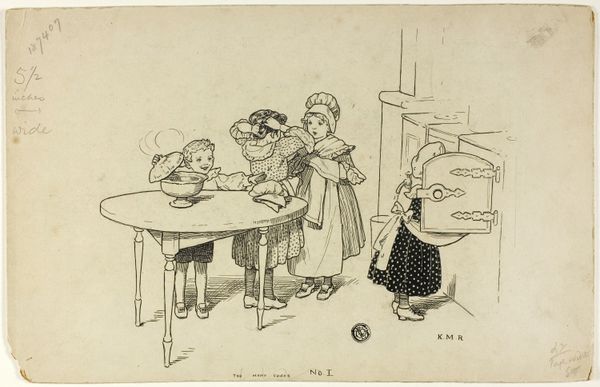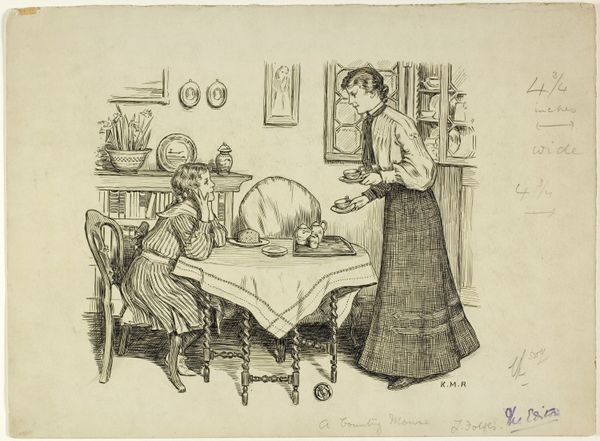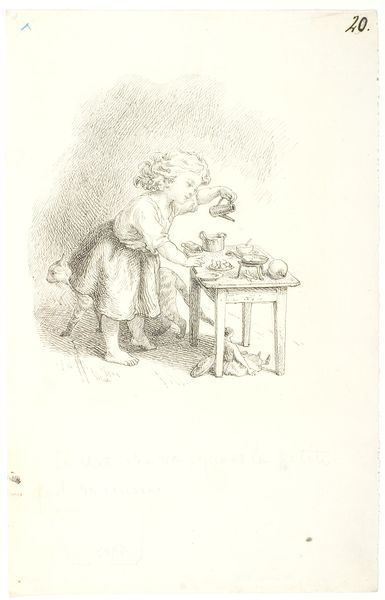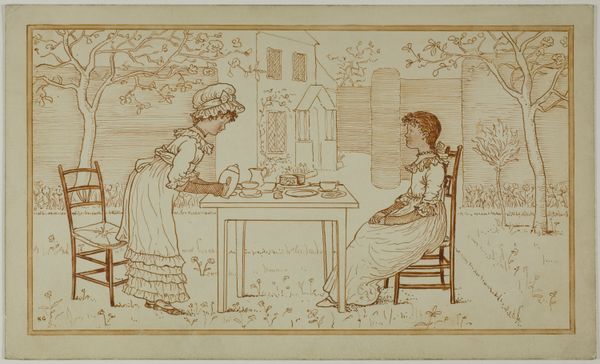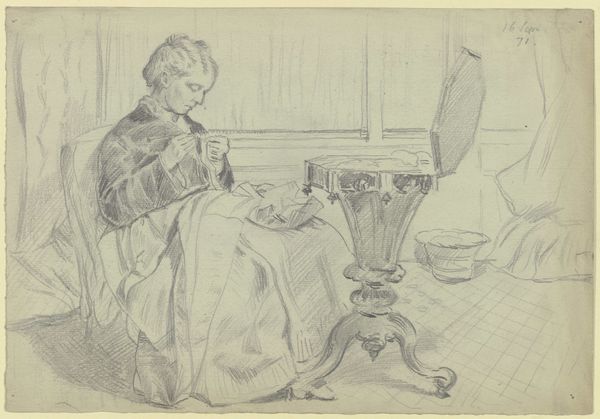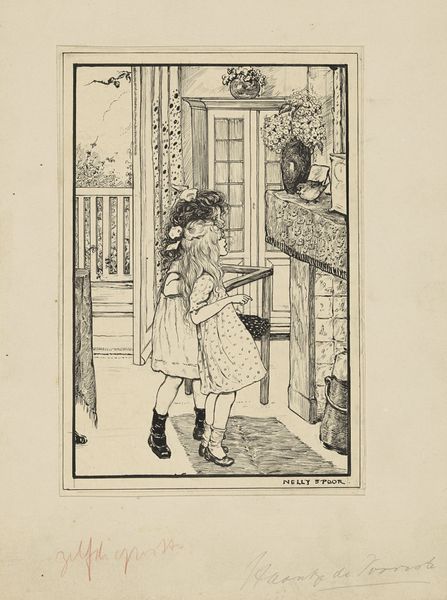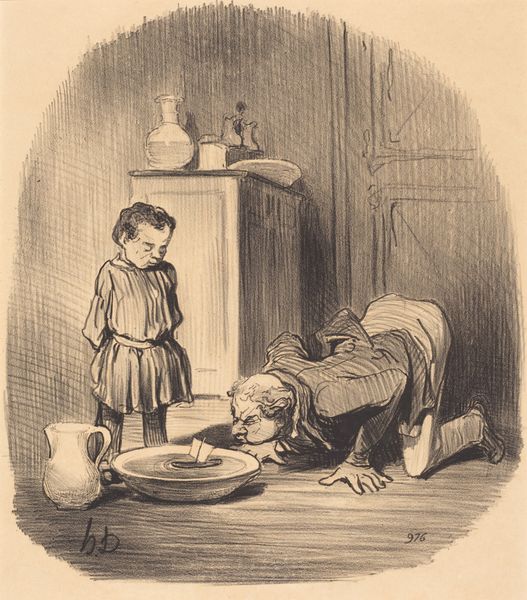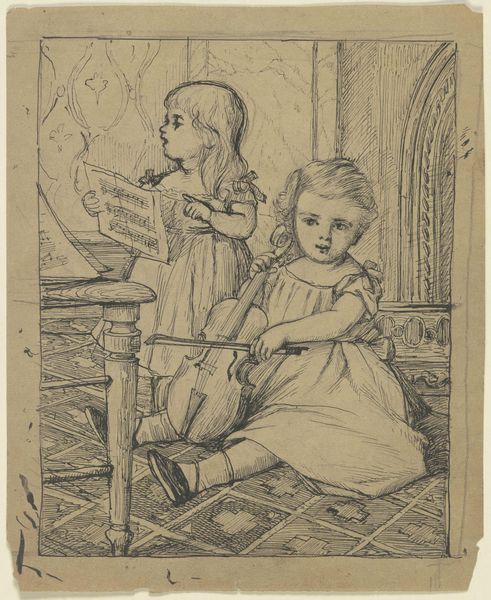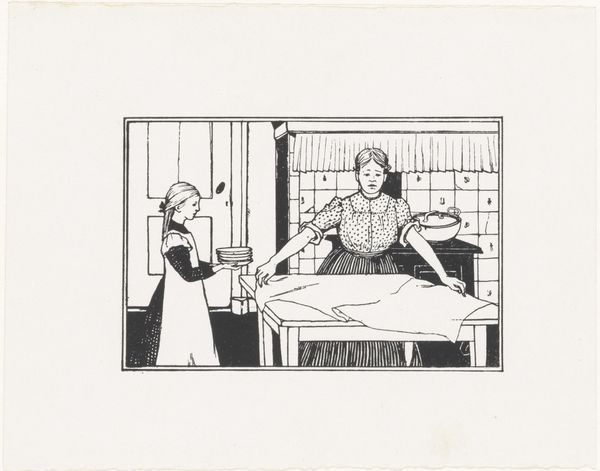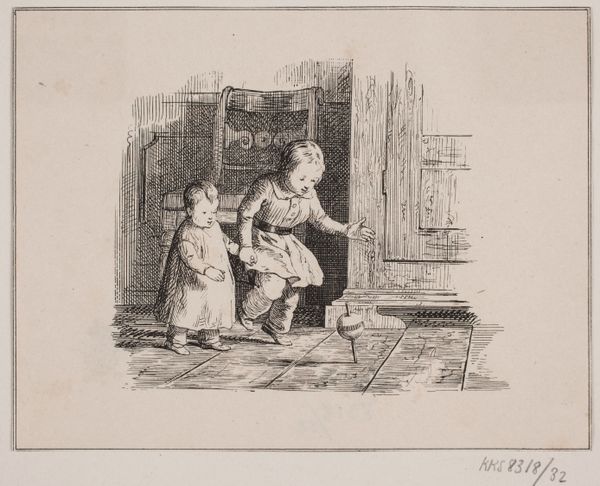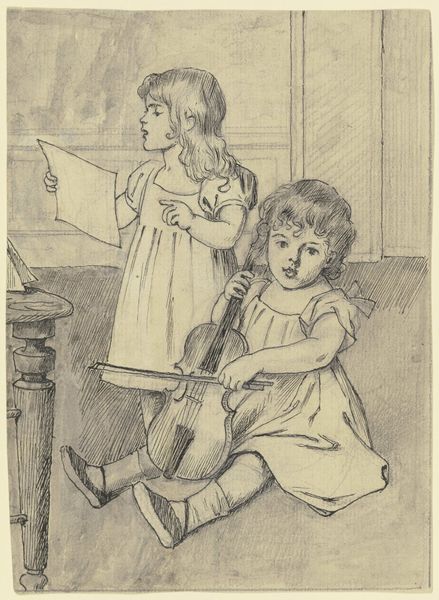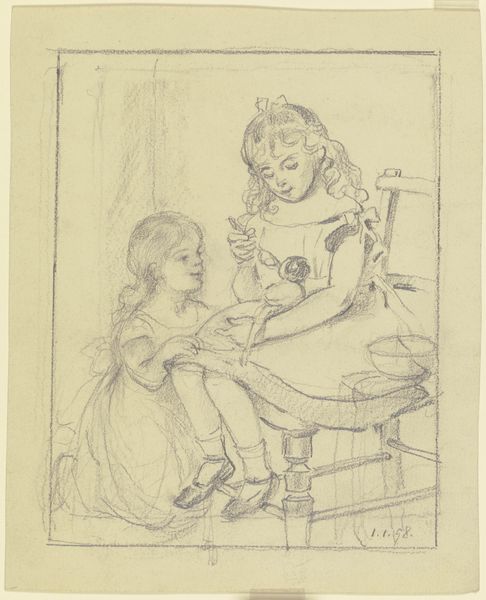
drawing, ink, pen
#
drawing
#
quirky sketch
#
narrative-art
#
pen sketch
#
figuration
#
personal sketchbook
#
ink
#
idea generation sketch
#
sketchwork
#
ink drawing experimentation
#
pen-ink sketch
#
sketchbook drawing
#
pen
#
genre-painting
#
storyboard and sketchbook work
#
sketchbook art
#
miniature
Dimensions: height 148 mm, width 235 mm
Copyright: Rijks Museum: Open Domain
Curator: Welcome. We are looking at "Twee meisjes spelend met een speelgoedfornuis," or "Two Girls Playing with a Toy Stove," created by Miep de Feijter. This drawing, made with pen and ink, likely dates to before 1935. What strikes you upon seeing it? Editor: Well, the most immediate thing is its intimate feel. The sketch captures a candid, domestic moment, evoking a sense of nostalgia. Curator: Precisely. Note the lines – they are economical yet descriptive. De Feijter uses them to define form and texture, giving dimension to the figures and the objects around them. Semiotically, the pen strokes themselves, seemingly casual, create the syntax through which De Feijter relays the artwork's intended message. Editor: It’s more than just aesthetics, though. Consider the social context: the image offers insight into the performative roles of women in the pre-war era. The girls, through their play, rehearse their expected adult roles. The stove isn't merely an object, it symbolizes the domestic labor that will largely define their lives. Curator: True, but look closer at the composition itself. The arrangement of the figures around the miniature stove creates a balanced yet dynamic interplay. It's an astute triangulation—table, children, stove. The whiteness of the negative space further focuses our eye on that domestic "stage." Editor: I’m wondering if "stage" is quite the right term, since the artist's decision to illustrate the scene imbues this “miniature” with the historical conditions regarding both girlhood and women. This illustration may well portray an accurate representation of what life looked like at the time, yet such images simultaneously reinforced particular expectations. Curator: That’s valid. De Feijter seems more invested in exploring form and shape. The drawing style and clear interest in defining and separating positive and negative space is typical of drawings produced by the artist, regardless of her intended statement. Editor: Yet the drawing provides a conduit for conversations about childhood and societal expectations of gender roles. As viewers, we're forced to grapple with issues such as assigned labour. The act of play, when observed in images such as this one, gives space for social critique. Curator: I concede your point about societal expectation. However, as a drawing, it offers a compact display of skillful execution, revealing an attentive artist at work. Editor: Perhaps this work inspires further considerations of representation, gender, and performance—revealing far more complexity than initially meets the eye.
Comments
No comments
Be the first to comment and join the conversation on the ultimate creative platform.
